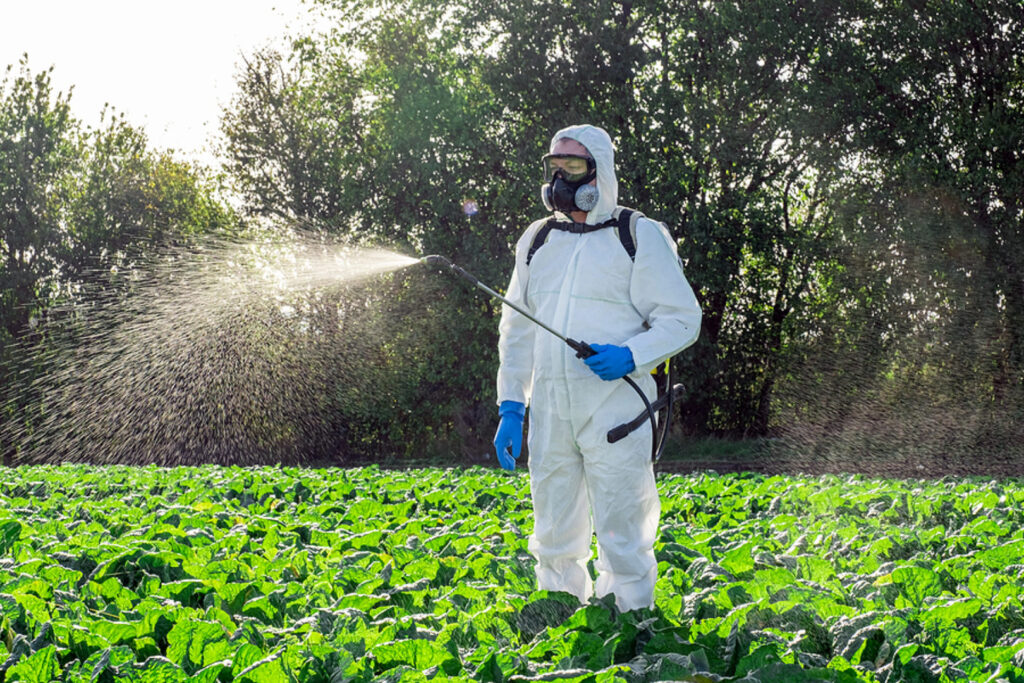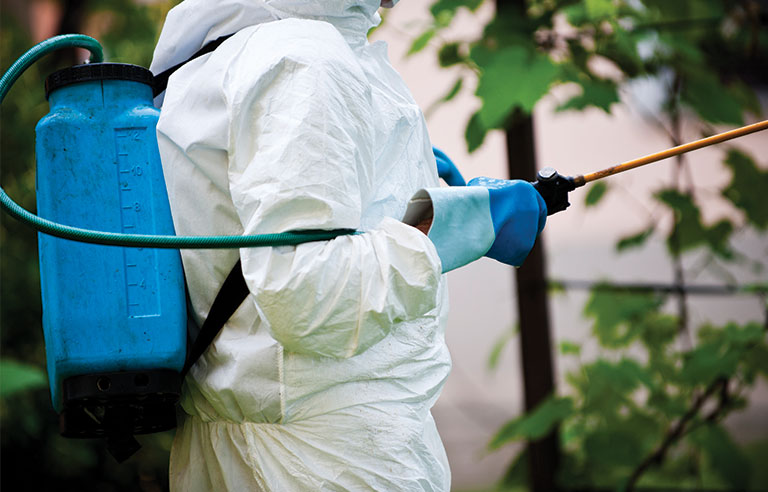You might want to grab a can of pesticide to get rid of the bugs, cockroaches, or mites that your family complains about. It might be your duty to eliminate the pests, but it is also your responsibility to keep your family safe.
The pesticide safety measures included in this post will help you reduce the risk of using pesticides in your home. It also covers must-avoid mistakes that can make pesticide application unnecessarily dangerous. Towards the end, there is a FAQ section that further clarifies how you should handle pesticide safety. But first, let’s look at the top safety measures when using pesticides.
Opt For The Least Toxic Pesticide You Can Get
This safety measure supersedes all other steps and contributes the most to the risk reduction of pesticide application. The more toxic a pesticide, the higher the risk associated with every aspect, including exposure, ingestion, and waste management.
Choosing the least toxic pesticide from the beginning is crucial if you use your garden to grow food because it ensures the risk is lower. After that, you can employ other hazard-reduction measures to keep your family safe.
Separate Pesticides From Other Items From The Get-Go

source: pinterest.com
This practice is applicable right from the moment you pick up the pesticide at the market. Any pesticide shouldn’t be placed in the cart where it comes in direct contact with other items. Even when you drive back home, you should store it far from food items, groceries, etc.
Place Pesticides Away From Casual Contact Areas
Aside from keeping pesticide containers away from food items, you should keep them away from casual contact surfaces like seats, chairs, and tables. That means you should not place the pesticide in the car’s backseat. Residue on the exterior of the pesticide pack can end up on the casual contact surface and ultimately transfer to a family member’s hand or skin.
Read And Follow The Directions On The Package
Once you have brought the pesticide to the area of use, you are just a step away from using it. But for safety reasons, you should first read the directions on the package. More importantly, you should look for the signal words indicating the hazard level of the specific pesticide.
Danger Poison – The word “poison” is usually mentioned on pesticides with the highest toxicity. Often, there is a skull and crossbones on the package as well

source: reaseheathbusinesshub.com
Danger – If the label says “danger,” the pesticide is capable of causing irreparable damage but is not as toxic as a product labelled as poisonous
Warning – If an exclamation mark or the word “warning” is mentioned on the label, then the pesticide is very likely to cause skin irritation but unlikely to have a permanent effect
Caution – The least toxic pesticides usually bear the word “caution.” They can cause mild irritation but are not as harmful as high-potency pesticides.
Regardless of the toxicity level indicated on the pesticide label, you should minimize skin contact, eye exposure, and chances of inhaling its fumes/particles. The directions on the package will help with this.
Assess The Area You Plan To Treat
Whether you want to clear your garden of insects or want your lawn to have fewer bugs, drawing a boundary around your garden or yard you plan to treat is highly recommended. It is best to treat one area at a time and to cordon it off completely, making it inaccessible to your children and pets. Use physical barriers if you have to.
Wear Appropriate Safety Equipment/Clothing

source: pinterest.com
The pesticide package might mention the safety equipment you need when applying a specific pesticide. You might need nothing more than a surgical mask and goggles when peppering an area with a heavy powder pesticide. For fumigation, you will need a respirator and even a hazmat suit. At a bare minimum, you need gloves, goggles, and something to keep you from inhaling toxic particles or fumes.
Ensure That You Apply The Right Amount
People often assume that the more pesticide they apply, the more effective their pest control campaign will be. There is a point of diminishing return in pesticide effectiveness by volume. If you use more pesticide than the package recommends, the area will remain hazardous for longer.
Make Sure The Area Is Properly Ventilated
Finally, you need proper ventilation in the space, especially if you’re using a pesticide indoors. The natural circulation of air is meant to strip the excess pesticide over time. This practice is less critical in exterior applications, where wind and direct sunlight can clean up and neutralize the residue.
Pesticide Application Mistakes To Avoid
Now that you know the best practices of home protection pest control to ensure your family’s safety during pesticide application, it is time to address the potential mistakes that can increase the risk profile of a pesticide. Stay clear of the following ‘Don’ts’ when using a pesticide in your home or garden.
Avoid Spraying Outdoors When It Is Windy

source: pinterest.com
If you apply pesticides outdoors, choose a day when the wind is not strong. You don’t want the wind blowing the pesticide in your direction, even if you’re wearing a respirator.
Avoid Having Snacks, Smoking, Or Drinking When Applying Pesticide
You should not eat anything when you’re spraying or sprinkling pesticide. No matter how cautious you are, simultaneously consuming food, beverage, or vapours while applying pesticides is very dangerous.
Do Not Wear Soft Contact Lenses During The Application Of Pesticide
This one is a little specific but is worth mentioning nonetheless. Soft contact lenses have an impressionable body that can absorb fumes. When applying pesticides, the last thing you want is for your lenses to act like magnets.
Avoid Reusing The Empty Pesticide Container For Any Reason
If you empty the pesticide container after one or several applications, you should get rid of the empty container safely. Do not reuse it to hold anything, including non-edible items. Some people believe it is safe to use empty pesticide containers for things other than food, but that is not the case.
Avoid Putting The Pesticide In The Garbage
Finally, you should not dump pesticides into the garbage can. Not only is it within reach of children, but it can also continue affecting the air in your home if there is any leftover pesticide in the container.
Pesticide Safety FAQs

source: pinterest.com
What To Do If You Spill The Pesticide?
If you spill the pesticide, you shouldn’t leave the area. Keep your kids and pets away from the spill, and upwind so the airflow doesn’t affect them. You should be in the safety gear required for pesticide application.
Once you’re sure you and your family are safe, you should use a neutral, sorbent material to clean the excess pesticide and let high-speed ventilation eliminate the rest. Cat litter, polypropylene, rags, and clay are some materials that can clean up the spill.
How Do I Get Rid Of The Remaining Pesticide?
If you have leftover pesticide, the best way to get rid of it is to give it to someone who needs it. Alternatively, you can wrap it in plastic and dispose of it as any hazardous material. Call the local hazardous waste collection to find the best drop-off point.
What Should I Wear When Applying Pesticide?
You should wear a respirator and goggles at a minimum and a hazmat suit at a maximum. The protective equipment you need is determined entirely by the kind of pesticide you use, and the label usually states what to wear.
How To Clean Up After Pesticide Use?
You should wash your hands with soap and warm water and then shower. After that, get a change of clothes and rinse the ones you wore during pesticide application.
Conclusion
Pesticides are essential and useful but can also be toxic and harmful. By choosing one that is less toxic and using not more than you need, you decrease the overall risk of contamination and exposure. Practice caution when storing and using pesticides, and follow the dos and don’ts mentioned in this post to keep your family safe.



